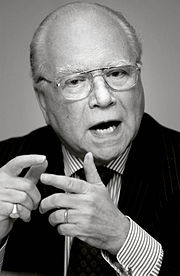Design
Design
Personality
Chart Properties
Your Cross represents the specific theme of your life. This cross embodies your unique potential & the lessons you're here to learn, providing a roadmap to fulfilling your life purpose.
We use the UTC birth time and date to do the calculations required to generate your Human Design chart.
Buy Tokens
Pay as you use, no expiry and no subscription required.Prompt Ideas
Get inspired with some epic prompt ideas.Spyder-D's Biography
American professional old-school rapper and producer from New York City. His brand of music was characterized by a laid back attitude, humor, and skills on the microphone. In his live instrumental backing tracks he combined elements of jazz and funk.
Big Apple Rappin’, perhaps Spyder’s most famous album from the post-disco era, was released on his own Newtroit Records in 1980, making him the first rapper to make an independent release. Another notable release was “I Can’t Wait (To Rock The Mike)”, released in 1986 as single, a version of the Nu Shooz hit “I Can’t Wait”. Other Spyder D releases include “Buckwheat’s Rap” (released by Profile in 1985), and the house party hit “Smerphie’s Dance”, now an often-sampled cult classic.
As an artist and producer Spyder shared the 80s musical spotlight with fellow Hollis natives Run-DMC, LL Cool J, Davy D, Hurricane, Orange Krush and Alyson Williams. He managed Power Play Studios in Queens, NY, from various stints from 1983 to 1998. He moved to Los Angeles for a brief stint between 1989 and 1992, where he worked with KDAY-AM’s Greg Mack and Curtis Harmon.
Spyder co-engineered and recorded his first full album, Gangsta Wages, with multi-platinum “remixologist” Greg Royal, which was released through his own Hype-Hop label. The imprint was distributed through Macola Records who, at the time also had 2 Live Crew, and Dr. Dre’s World Class Wrecking Crew. Spyder also worked in the studio with Malcolm McClaren on writing lyrics for Sparky D for McClaren’s Hip-Hop/Opera fusion.
In 1996, after once again taking over the reins as Power Play Studios full time manager, Spyder began a dual role as both engineer and manager for the renowned studio. In 1997, Spyder moved on to become manager and engineer for Gospel Jazz musician Mel Holder at Toy Factory, another Queens, NY based recording studio. In 1999, he moved to Atlanta, and began freelance engineering at Dallas Austin’s DARP Studios, and Bobby Brown’s Boss Recording, bringing with him some of his New York and northeast clientele, including Jam-Master Jay protégé Derrick Stanfield-Kivoi. He released a full-length album in 2000 entitled True Dat, which didn’t earn the acclaim of his early work.
In 2005, Spyder became the owner of an American Basketball Association franchise, the Charlotte Krunk (named after a type of hip hop music). The franchise moved to Atlanta and joined the Continental Basketball Association under new majority owner Freedom Williams, the former lead voice for multi-platinum dance-hop group C+C Music Factory, where Spyder signed Grayson Boucher, of And 1 fame, and recruited Kenny Anderson as head coach.
Link to Wikipedia biography
Your Cross represents the specific theme of your life. This cross embodies your unique potential & the lessons you're here to learn, providing a roadmap to fulfilling your life purpose.
We use the UTC birth time and date to do the calculations required to generate your Human Design chart.
Prompt Ideas
Get inspired with some epic prompt ideas.

Marc Frans Maria Eyskens
1/3 Emotional - Solar Plexus Projector

William E. Mason
6/2 Mental ProjectorChristine Gouze-Rénal
5/1 Emotional - Solar Plexus Projector

Betty Ford
4/6 Splenic ProjectorAntoine Saintraint
4/6 Emotional - Solar Plexus Generator





